PLATIN MONACO AUDIO COMPONENTS
The Platin Monaco Center Channel Speaker contains two drivers and a tweeter and the company has not published any additional specs. All speakers are constructed of a solid and heavy material with a premium look flat back exterior. One thing we will mention is that the speakers are a magnet for the oils of ones hand and fingerprints are inevitable on the surface when touched. We have found literature that states the wattage of the Monaco 5.1 cinema to be 270W.
The center channel has been designed with an enhanced base reflex port to boost sound resonance and force created by the drivers. It’s dimensions are 5.3″L x 10.2″W x 4.3″H. The term satellite speaker is most fitting when we show this on top of our former BIC America Acoustech PL28II 225W Center Speaker.
The four satellites are very compact and measure 6.7″H x 4.3″W x 5.5″D and contain one driver and one tweeter. On the bottom of each is a permanent foam padding and center port for a 12mm long M6x1.0 screw to secure the speaker to a mount or stand.
The back of each Monaco speaker is rather unique compared to what we see in normal speakers, and not only because there are no connectors for speaker wire. On the top right is a small sticker designating the speakers position as we spoke of. This sticker simply designates that all speakers have been pre-configured with the SoundSend for ease of setup. They can be changed by via the SoundSend App, if need be.
Below that sticker in the center area is an LED for Network Link confirmation and an ‘Associate’ button beside that just in case the speaker needs to be synced for any reason. At the bottom is a Service Port (haven’t a clue) and the power port. When connecting, two flashing green LEDS are present which turn to one solid green LED when connected. If for any reason one sees a flashing red LED, this identifies that the speaker has yet to be configured into the surround setup. Simply press the ‘Associate’ button.
The Platin Monaco subwoofer measures 5.3″H x 10.2″D x 12.2″W and contains a 6.3″ driver the faces the floor. Being just 5.3″ high, we have seen recommendations of placement under ones couch, however, we haven’t quite seen things in that respect just yet.
Aside from the Network Link LED, Associate Button and Service Port. there is a power switch, button and connectors for a wired/wireless connection, as well as two buttons and an LED for increasing or decreasing the volume. The volume can also be adjusted via app.
SOUNDSEND APP
Another positive (and negative in a way) about the SoundSend Audio Transmitter is that is solely controlled by the IOS/Android App. This is great for many because we just have too many remotes lying around and yet another would simply add to that pile. On the other hand, the ability to program certain functions into ones universal remote is lost without that remote. This may merit some creative thinking when using several different components and my build is just such an example.
I use an Amazon Firestick for Prime, Netflix, Crave, Youtube, etc which passes Dolby Digital to the SoundSend Transmitter while my Bell Satellite box for some reason only sends the PCM signal. This doesn’t allow for the TV to remain in Dolby Digital all the time and some time I have to reset one or another to the proper mode. It isn’t so much trouble for myself as it is for my better half who doesn’t want to have to play with anything while enjoying our home cinema.
The SoundSend App provides several options for sound and speaker customization. In setting up your system, speaker distance can be recorded as well as trim. ‘Audio Settings’ is without a doubt the most useful menu as it allows you to choose your source as HDMI (ARC) or Optical (TOSLINK), lets you adjust Lip Sync if you encounter picture voice match issues, allows adjusting of sound to include voice volume along with choosing a Direct Signal or their programmed Movie, Music or Night modes. This app also allows adjustment of volume must faster and much more accurate than that of your remote.
With respect to audio modes, Direct leaves the sound unprocessed as sent from the TV, meaning of course that it remains DD/DD+/TrueHD as received. Movie, Music and Night modes are still based on the original signal, however contain Dolby Surround additional processing features to fill out that sound. Night mode brings down the subwoofer a bit and compresses/quiets sound levels. ATMOS virtualization relies on an already tried and true experience seen in many sound bars that adds to the dimensions of the sound without it being True ATMOS. Many notice a significant difference with Movie Mode and ATMOS on.
 Technology X Tomorrow's Technology Today!
Technology X Tomorrow's Technology Today!

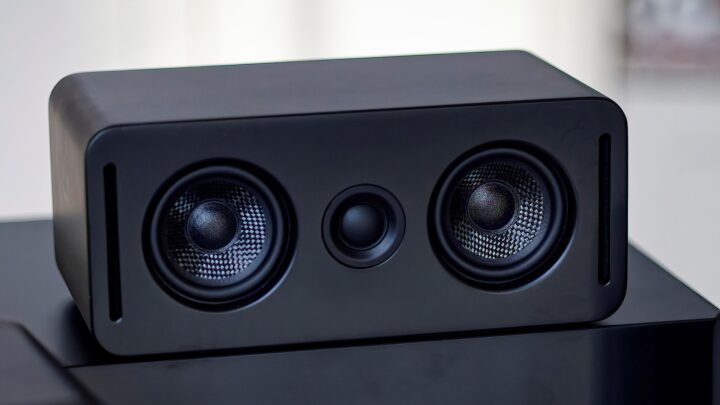
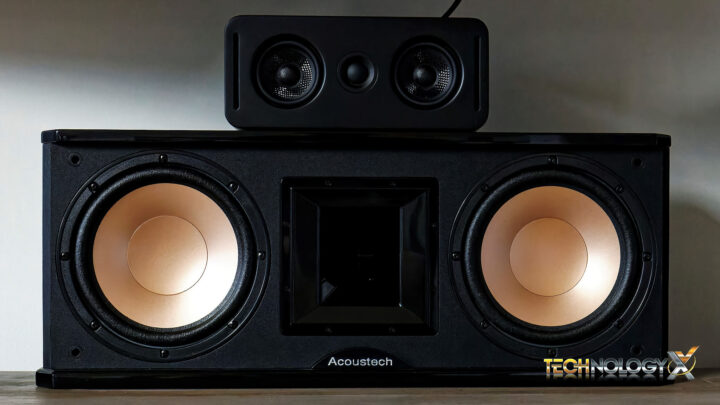
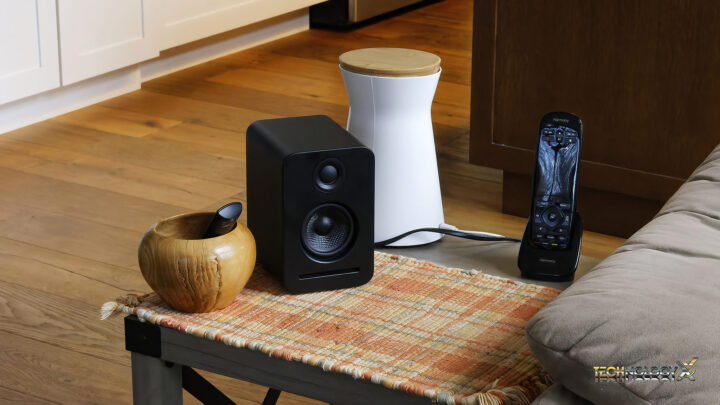
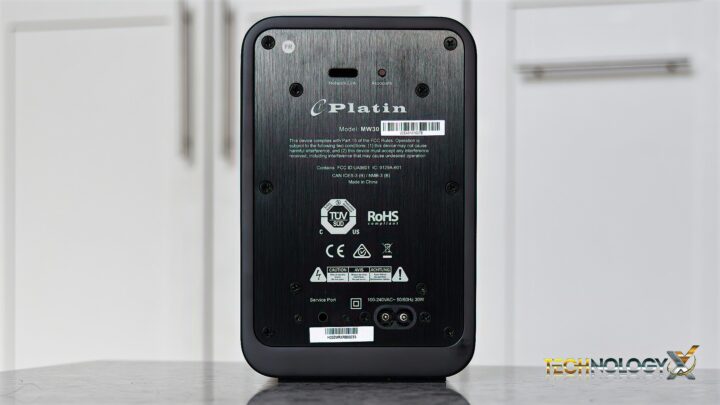
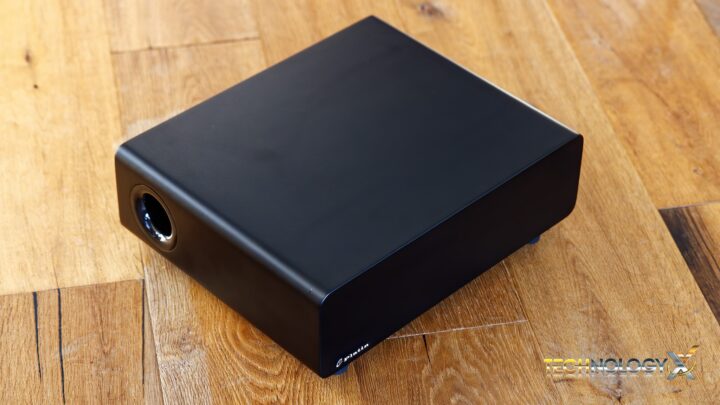
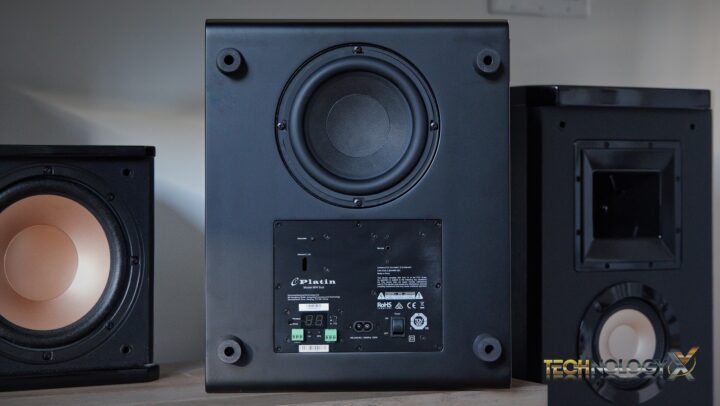
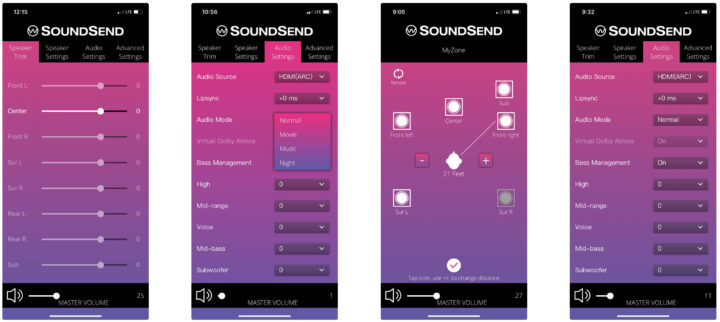
I am about to purchase this system. Thanks for the great review. Other reviews are similarly positive. I am trying to find a way to solve the Atmos challenge. All the package surround speakers have horizontal drivers. I have seen a Wias ceiling speaker, but was wondering if you know of a compliant surround speaker with a vertical driver. Thanks for any input you can provide.
Ps: I am also thinking of trying to find an alternative subwoofer. One of the reviews thought this was the week point in the system.
I do not and would appreciate if you can send me the link to the WIAS ceiling picture. Unfortunately in my particular set up with a ceiling 25 plus feet high, this is a challenge that I could not overcome. As for the subwoofer, you can double up two wireless, but yes, I understand that as well. Having said that, I absolutely love this solution to my cinema dilemma, although not the perfect one. Very happy with the sound FX.